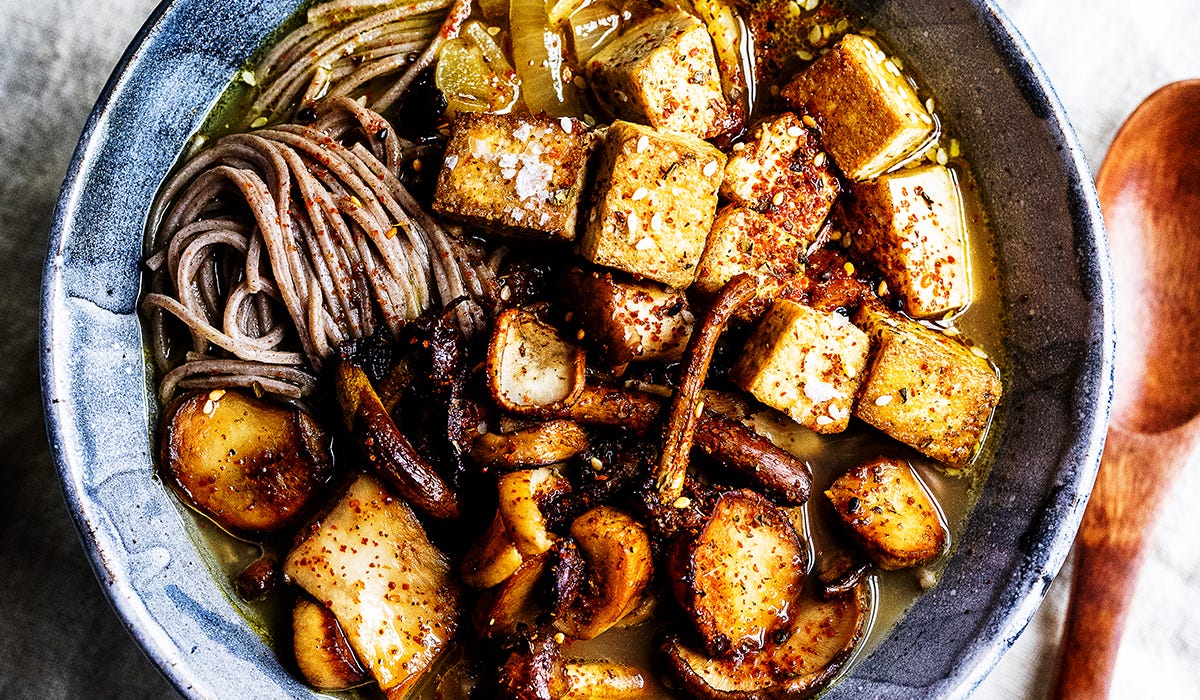Love Letter to Wasabi
I finally got to experiment with the real deal 🌞
Happy Friday! I hope everyone is having a great week. Today, I’m writing because I wanted to share the excitement I got from experimenting with genuine wasabi last night.
Last week, during my weekly grocery trip, I got lucky and found genuine wasabi at Hmart. It was a cool $200 per pound, but for such a tiny piece, it ended up running me $12. I felt that was a small price to pay for this elusive root, so I snatched it up.
I probably should have used the wasabi immediately, but I had a few other recipes on deck, so unfortunately it sat in my fridge for a few days.
Regardless, yesterday I finally broke it open, and look at that beautiful green color!
For this post, I thought it would be fun to share some of the wasabi facts I’ve learned along the way as well as point you to the recipe I just made with this radical root.
The differences between real and ‘fake’ wasabi:
Wasabi and horseradish are different plants within the same family. Most of the wasabi you enjoy at sushi restaurants will be the more readily accessible horseradish mixed with food coloring.
Most–think 99% or so–of wasabi served or sold in the US is a blend of horseradish, mustard flour, and green food coloring.
Even in Japan, many sushi restaurants will opt for the wasabi dupe because of how prohibitively expensive the real stuff is.
It’s a tricky bugger to grow! In fact, it is the most difficult plant to cultivate. Wasabi is very particular about its environment, humidity, water content, and temperature, and it takes two years to even reap the rewards of your hard work. Even more fun is that one teeny, tiny mishap can ruin the whole crop.
Because of all these difficulties, it is super expensive in Japan and abroad. In Japan, prices can soar to $100 per pound despite being native to Japanese soil!
Once peeled and grated, you need to use it within 5-10 minutes for the best flavor!
What I made (+bonus recipes)
Note: All of these recipes can be prepared with storebought wasabi paste or oil.
Easy Chicken Udon with Wasabi
I whipped up a gorgeous bowl of udon and made a simple wasabi oil to drizzle on top. The result is savory and somewhat bright broth (thanks to Yuzu miso!) with a nose-tingling spicy finish.
Tuna in Wasabi Pea Broth
This is a recipe from the archives which uses store-bought wasabi oil. If you find genuine wasabi, you could replace the storebought wasabi oil with homemade.
Soba in Wasabi Broth
You could also make this bowl of comforting soba in wasabi broth with tofu. You’ll have to pick up my newest cookbook for the recipe for this one!
I hope you enjoyed this little excursion into trying out new (to me) ingredients! I love wasabi and never had the opportunity to try the real deal, so this was really fun.
Also, I have new products in the shop including this amazing Moroccan extra virgin olive oil. This extra virgin olive oil is made in Morocco and never blended with other oils and is clearly traceable from the trees to your table. The result? An ultra-low acidity that is perfect for finishing dishes or whisking into your next salad dressing. Grab a jar from the shop and get cooking!








